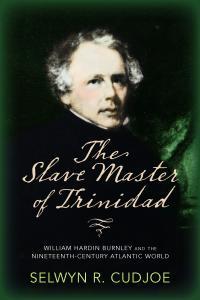White Brutality Against Black and Brown People
By Dr Selwyn R. Cudjoe
June 07, 2021
"Get the niggers," was their slogan, / "Kill them, burn them, set the pace. / Let them know that we are white men, / Teach them how to keep their place."
—A. J. Smitherman, "The Tulsa Race Riot and Massacre" (1922)
I had just left Harvard University as an assistant professor and was doing "Time to Talk," a series of interviews for T&T Television. In 1982 I interviewed Sam Nujomo, the founding father of Namibia, where he had addressed the UN Decolonization Committee about his country's independence. We talked about Namibia's struggle for independence and the stain German genocide had left upon the consciousness of his people.
Between 1904 and 1908 German soldiers killed more than 60,000 indigenous Herero and Nama ethnic people when they rose up against German colonialism. The United Nations considered this massacre "the first genocide of the 20th century" (Financial Times, May 29). I left my meeting with Nujomo with a heavy heart; that grievous conversation remained on my mind.
Forty years later Germany officially recognized its slaughter of Namibians and agreed to pay 1 British billion pounds in recompense although it was afraid to call it reparations. While the German government acknowledged its "moral responsibility" for the genocide, it did not offer an official apology allowing it to evade further compensation claims. Heiko Maas, Germany's foreign minister, emphasized: "Legal claims to compensation cannot be derived from this" (FT, May 29, 2021).
On May 28th the remains of 215 indigenous children were found at the site of a former residential school for indigenous children at the Kamploops Indian Residential School in British Columbia, Canada. It is believed that these murders were committed by the teachers and guardians of these children, a product of Canada's policy of cultural genocide. From the middle of the 19th century until the 1970s more than 150,000 First Nation peoples (Indians, Inuit and Metis) were forced to attend state-funded Christian schools as part of a program to assimilate them into Canada's society.
These students "were forced to convert to Christianity and not allowed to speak their native languages. Many were beaten and verbally abused, and up to 6,000 are said to have died….Many students recall being beaten for speaking their native language; they also lost touch with their parents and customs" (CBS News, May 30, 2021).
In 2006, the Canadian government agreed to pay $1.86 billion dollars (US) for the sexual and physical abuse of these children or what they called "an overall holistic and comprehensive response to the Indian residential school legacy." By March 2016, the government had paid out $1,622,422 to 79,309 former students. By December 2018, it had paid out an additional 3.174 billion dollars for the damages it caused through the suppression of their Native languages and cultures.
On Monday, the world turned its attention to the Greenwood district of Tulsa, Oklahoma, in the United States, where in 1921 a white mob plundered the town for two days (May 31 and June 1). Greenwood was a prosperous Black town that had earned the name "Black Wall Street." White people became jealous and couldn't stand to see Black businesses thriving.
When they had finished their destruction, they had burned 1,100 houses and businesses to the ground, left 10,000 people homeless, killed 300 Blacks and dumped many of them into mass graves. The white government even used air planes to drop firebombs on the Black townspeople in what George Yancy called "genocidal, state-sanctioned racist violence" (Truthout, June 3).
A. J. Smitherman, editor of the Tulsa Star, captured this violence in his poem "The Tulsa Race Riot and Massacre." He wrote: "At the signal from the whistle / Aeroplanes were seen to fly, / Dropping bombs and high explosives, / Hell was falling from the sky. / On all sides the mob had gathered / Talking in excited tones / With machine guns, ready, mounted, Trained upon a thousand homes." None of the white rioters was ever punished.
Just as the Express published accounts of the genocide of Indian children in Canada and the atrocities against Black people in Tulsa last Sunday, the Mirror, a Trinidad newspaper, published an account of the genocide of Black people that took place in the Belgian Congo at the end of the 19th and the beginning of the 20th centuries.
Between 1885 and 1910, Belgium killed or worked to death over 10 million Congolese people, about half of the native population. Louis Goffin, the Belgian author of Le Chemin de Fer du Congo (1907) wrote:
"Out of two thousand negroes, employed on the construction in 1892, 150 a month died from illness….All along the track one would see corpses of negroes dead of smallpox, dysentery, beriberi. At times in the morning we would see before the door of our cabin the corpse of some negro dead during the night, placed there by his exasperated comrades as a protest" (quoted in The Mirror, January 28, 1908).
These conditions cause panic among the West African workers. Unable to recruit Africans the Belgian company imported Black West Indians and Chinese from Macao to work on the railway. However, "They fared no better than the first lot of 2,000 men who had come from West Africa. Still we pegged away at the gradual improvement of the conditions of life for black men and white in this terrible Cataract region" (Goffin).
White nations in Europe and America have always brutalized and terrorized brown and Black people in the world. These events, whether we like it or not, shape how we see and are seen by others. It's important that we pay a close examination of what's taking place in Namibia, British Columbia, and Tulsa today. It matters to us.
Prof. Cudjoe's email address is scudjoe@wellesley.edu. He can be reached @ProfessorCudjoe.
Share your views here...

The Slave Master of Trinidad by Dr. Selwyn R. Cudjoe
|

